
The current IKEA leadership practices and patterns are based on leadership principles and life philosophy of its founder Ingvar Kamprad. Known to practice transformational and charismatic leadership styles, Ingvar Kamprad had been a driving force for many decades behind the phenomenal success of the home improvement and furnishing chain. Ingvar Kamprad founded the furniture retailer in 1943 and after leading the business for 70 years, he handed over control to his three sons. Nevertheless, work principles of the founder associated with frugality and effectiveness continues to serve as a basis for IKEA leadership practices in modern days. In 2017 Jesper Brodin became President and CEO of IKEA Group, INGKA Holding B.V. and its controlled entities. He is only the 6th CEO in The Swedish furniture chain’s history of more than 75 years. Mr. Brodin has worked as an assistant to founder Ingvar Kamprad and it is widely believed that IKEA CEO will not change the strategic direction set by the founder of the business. The CEO of Inter Ikea that manages company’s brand and concept Mr. Jon Abrahamsson Ring has also served as founder’s assistant for many years. It has been noted that “former assistants of Mr. Kamprad have had a near monopoly on the leadership of the two main companies in the furniture empire in recent times”[1]. Apart from two executives mentioned above, former Ingka CEOs Peter Agnefjall and Anders Dahlvig were also former assistant to Mr. Kamprad. IKEA leadership principles are based on the following pillars: 1. Leading by example. It is difficult to contain IKEA leadership style into a single classification due to a unique nature of the business in more than one ways. Perhaps, leading by example, may the most closely characterise leadership practices at IKEA. The famous quote by IKEA founder Ingvar Kamprad…
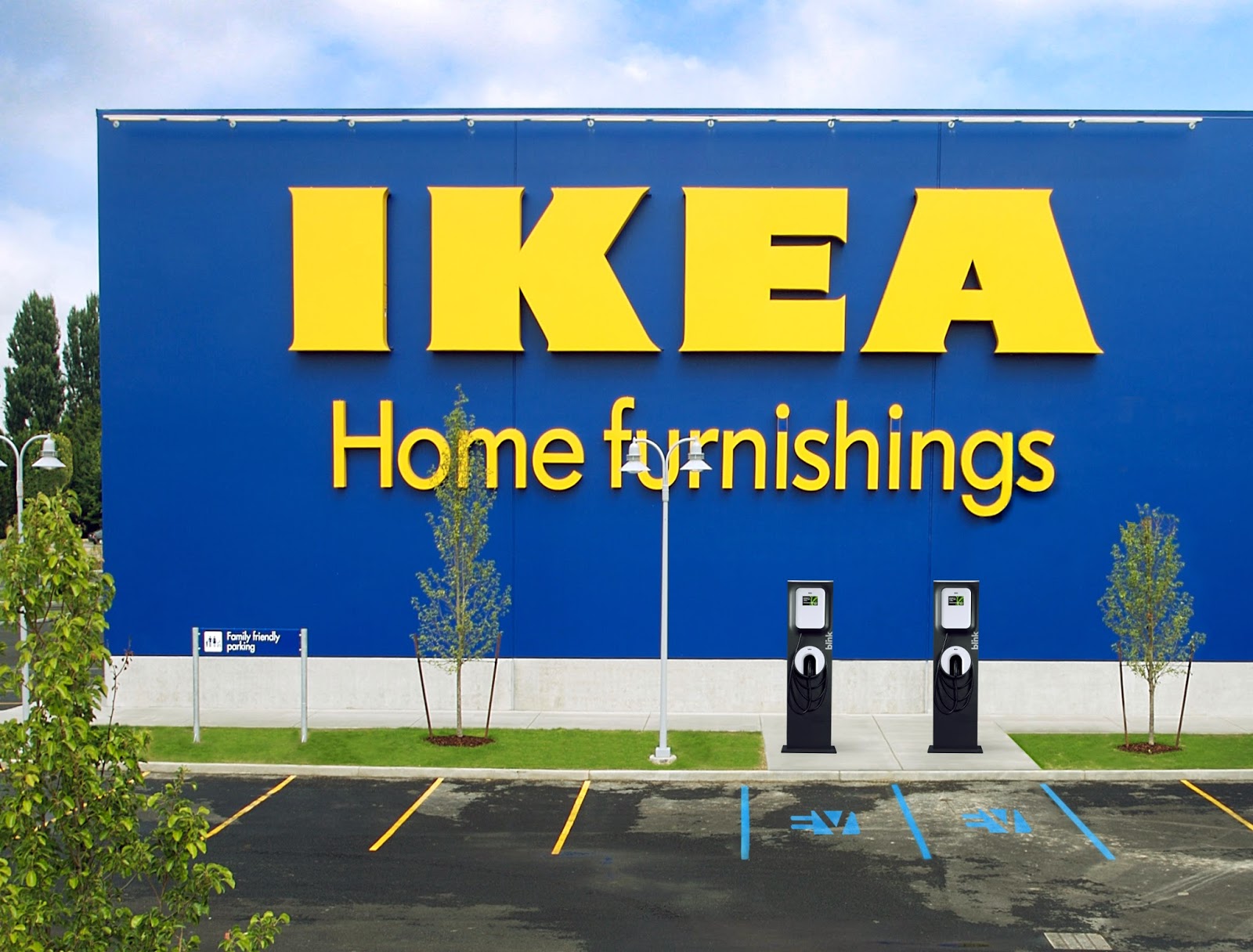
IKEA business strategy is built upon the IKEA concept. The IKEA Concept starts with the idea of providing a range of home furnishing products that are affordable to the many people, not just the few. It is achieved by combining function, quality, design and value – always with sustainability in mind. The IKEA Concept exists in every part of the company, from design, sourcing, packing and distributing through to business model.[1] The following points constitute integral elements of IKEA business strategy. 1. Offering the lowest prices. Cost effectiveness is one of the solid bases of IKEA competitive advantage. The global furniture retailer is able to offer low prices thanks to a combination of economies of scale and technological integration into various business processes. 2. Increasing variety of products. Great range of products also belongs to the list of IKEA competitive advantages. There are 12000 products across in IKEA portfolio and the company renews its product range launching approximately 2000 new products every year.[2] The company is also increasing its presence in food and catering industries. 3. International market expansion strategy. The home improvement and furnishing chain has traditionally engaged in new market development in an aggressive manner. IKEA has11 franchisees operating in more than 500 locations in 63 countries.[3] Furthermore, The Swedish furniture chain has long-term plans to establish its firm presence in many developing countries. 4. Benefiting from strategic alliances. The global furniture retailer benefits from strategic alliances to a maximum extent. The formation of strategic alliances is placed at the core of IKEA business strategy. The list of the most successful collaborations include partnership with Apple to explore the possibilities of Augmented Realityas a tool for home-furnishing, partnership with LEGO for new product development and partnership with Adidas in knowledge sharing about customer behaviour. Experience and competency…
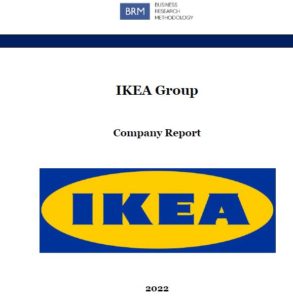
IKEA Group owned by Stichting INGKA Foundation is the largest furniture and home appliances manufacturer and retailer in the world. Founded almost eight decades ago in Småland, southern Sweden by Ingvar Kamprad, today IKEA Group has 11 franchisees operating in more than 500 locations in 63 countries (Annual Report, FY21). By the end of FY21 IKEA employed 225000 people worldwide, an increase of 8000 people compared to the previous year. The world’s largest furniture retailer offers nearly 12000 products and develops approximately 2000 new products each year. In FY21 the company generated total operated income of EUR 25.6 billion, an increase of 8.5% compared to the previous year. Net profit for the year amounted to EUR 1.4 billion (Annual Report, FY21). IKEA’s vision is “to create a better everyday life for the many people” and the company follows an extreme cost leadership business strategy along with new product development strategy to realize this vision. International market expansion strategy also represents an important element of IKEA business strategy. Leadership style exercised to manage the home improvement and furnishing chain can be branded as leading by example, as set by the late founder of the business Ingvar Kamprad. Furthermore, the company has integrated the principles of frugality and intangible employee motivation into its leadership practices. The Swedish furniture chain has devised a unique and complicated organizational structure designed to pay minimum taxes. IKEA possesses a number of noteworthy strengths such as market leadership, ownership and efficient application of democratic design concept and solid financial position of the business. At the same time, the global furniture retailer has serious weaknesses as well. These include weak presence in Asia, difficulty to sustain the competitive advantage and the lack of flexibility of the business due to its large size. IKEA Group Report contains the application…
IKEA Group Report contains the application of the major analytical strategic frameworks in business studies such as SWOT, PESTEL, Porter’s Five Forces, Value Chain analysis, Ansoff Matrix and McKinsey 7S Model on IKEA. Moreover, the report contains analyses of IKEA’s business strategy, leadership and organizational structure and ecosystem. The report also analysis marketing strategy, ecosystem and discusses the issues of corporate social responsibility.
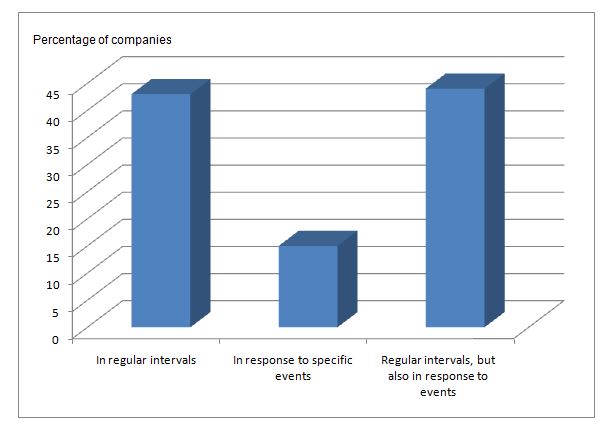
This article critically evaluates the notion of firm and transaction costs and explores how do firms set prices. The article starts with setting context for discussions and this is followed by critical evaluation of firms from the perspective of transaction costs. Moreover, the article contains critical analysis of price setting practices of firms by referring to set of relevant studies and theoretical frameworks. How do firms set prices? Although the range of issues discussed in this paper are not new and they have been previously addressed by many economists in varying levels of depth, importance of firms, evaluation of transaction costs approach and the nature of price-setting strategies engaged by firms may be greater than ever before. In other words, recent global economic crisis of 2007 – 2009 has revealed significant shortcomings of liberal market economy at multiple levels, and from this perspective reassessment of the core notion of firms, relevance of transaction costs and price setting practices of modern businesses may provide valuable data in terms of developing macroeconomic policies to minimise chances of economic crises in the future. The most popular price setting techniques include market level pricing, competition pricing, variable and fixed mark-up pricing, pricing set by government regulatory agency, and customer-set pricing (Anderton, 2008). Each of these price setting techniques has its own advantages and disadvantages and selection of any particular technique depends on a wide range of factors such as the nature of products and services, intensity of competition, customer purchasing power etc. Additionally, pricing strategies can be divided into new-product pricing, differential pricing, psychological pricing, product-line pricing and promotional pricing categories (Pride et al, 2010: 386). The choice of a pricing strategy according to this particular categorisation depends on the business strategy of the company. For example, the level of effectiveness of the…
By John Dudovskiy
Category: Economics
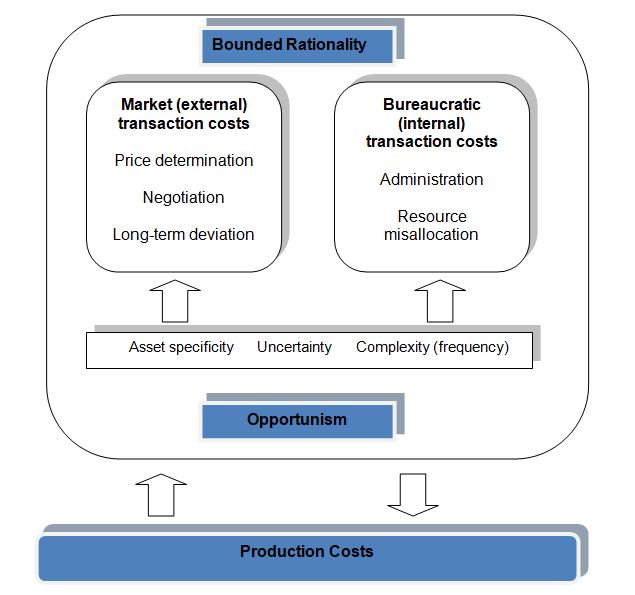
What is a firm? In essence, as private sector organisations firms pursue the main objective of profit maximisation. However, this is the most basic approach to firms and roles and responsibilities of firms can be studied in a greater level of depth with the application of relevant theoretical frameworks. There are several main theories of the firm and distinction can be made between these theories on the basis of approach adopted towards relationships between the firm and society (Sloman et al., 2013). For example, one of the earliest approaches to firm, ‘black box’ perspective perceives firms as economic entities that transform input into output in a profitable manner. ‘Black box’ perspective involves “how production and cost functions interact with demand on the market, i.e. the emphasis is on technical matters and how firms function in the context of the market” (Dietrich, 2007:19). ‘Black box’ perspective to firms can be criticised on the grounds of being overly abstract and general, and it does not take into account the impact of firm-specific factors. Transaction cost can be defined as “the costs incurred when firms buy inputs or services from other firms as opposed to producing them themselves” (Sloman et al., 2013:33). Transaction cost economics originates from the work of Ronald Coase who argued that “firms exist to economise on the costs of using the market” (Sykuta, 2010: 39). In other words, Coase perceives the cost of using the price mechanism as the main profit motivation for firms. Coase insisted firms to be perceived in real-life environment taking into account specifications of the real world, as well as, transaction costs of alternative organisational structures. Transaction cost economics is associated with Oliver Williamson, who expanded the work of Coase (1937) by increasing the levels of focus on organisational forms and associating business management with…
By John Dudovskiy
Category: Economics

Plog’s tourist motivation model (1974) is a popular framework widely referred to in tourism studies. According to the model tourists can be divided into two broad categories: allocentrics and psychocentrics. Allocentrics usually choose exotic destinations and unstructured tours and vacations they prefer to get involved with local culture to a great extent. Psychocentrics, on the other hand, choose familiar destinations and they usually engage in tourism via packaged tours in a conventional manner (Plog, 1974). The terms of allocentrics and polycentric were later replaced by Plog (1974) to the terms of venturer and dependable respectively, in order to make them more ‘reader-friendly’ (Hudson, 2008). Plog’s (1974) Psychographic Personality Types Source: Hudson (2008), adapted from Plog (1974) and Plog (2002) As it is evident from figure above, according to Plog’s tourist motivation model the majority of tourists can be classified as mid-centric, i.e. they do not belong to neither psychocentric or allocentric categories. Plog’s (1974) Psychographic Personality Types has been criticised for being difficult to be applied because individuals may travel motivated by different factors in different occasions (Hudson, 2008). In other words, an individual may choose an exotic destination for tourism and get closely involved with local culture, yet it may not be appropriate to brand the individual as allocentric because the same person may purchase a conventional tourism package the following year. References Hudson, S. (2008) “Tourism and Hospitality Marketing: A Global Perspective” SAGE Publications Plog, S.C. (1974) “Why Destination areas rise and fall in popularity” Cornell Hotel and Restaurant Quarterly, Vol.14, Issue:4 Plog, S.C. (2002) “The power of psychographics and the concept of venturesomeness” Journal of Travel Research, Vol.40
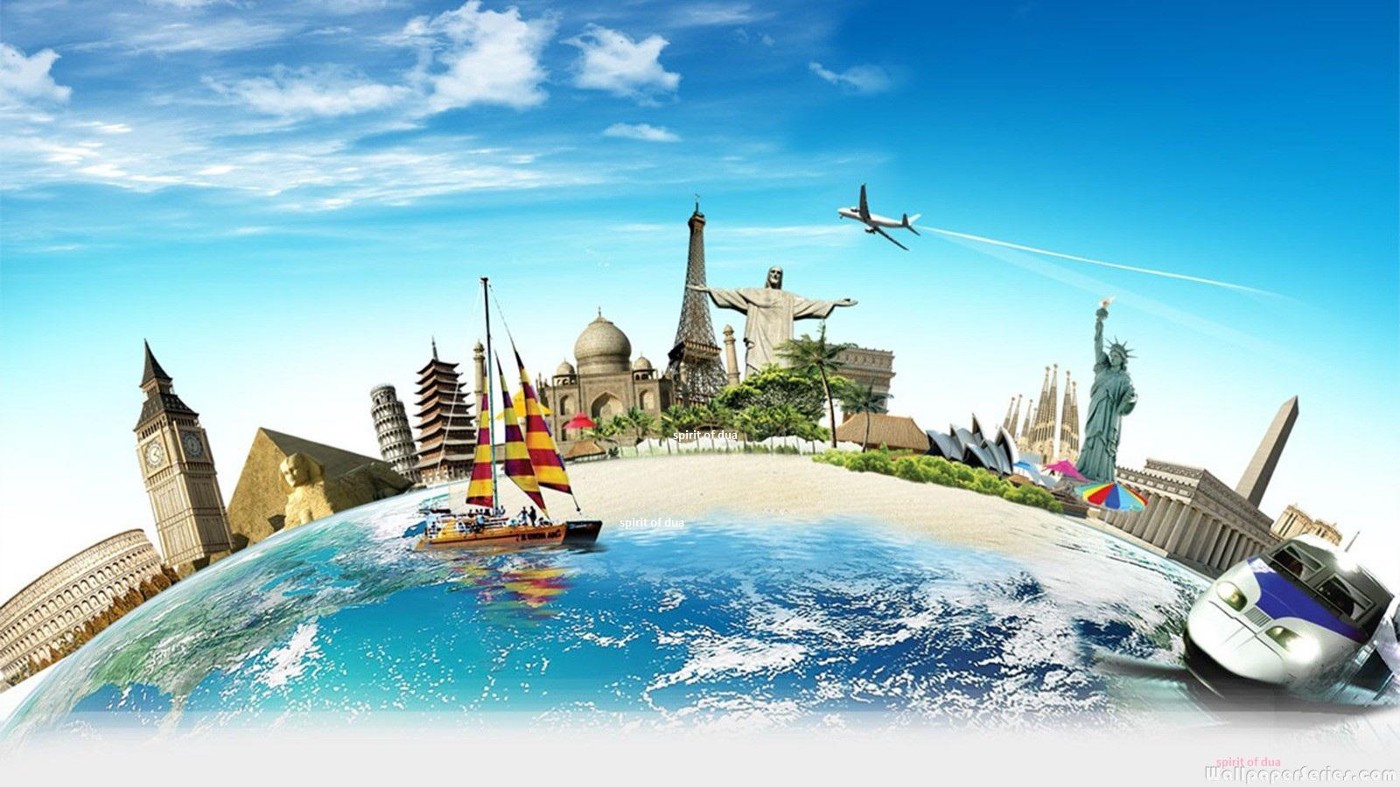
The literature review has established viewpoints of other authors about unique characteristics of tourism industry. Literature review has revealed the following unique characteristics of tourism industry as summarised by TSA project in 2008: Firstly, the tourism is not an industry. The rationale behind this viewpoint relates to the idea that tourism comprises a wide range of individual businesses in a wide range of areas such as catering, transportation, entertainment, manufacturing and others. However, this viewpoint is not shared by all authors and many prominent authors in the area of tourism such as Webb (2009), Solomon and Rabolt (2009) and Rajagopal (2010) still refer to tourism as an industry. Secondly, in tourism consumers come to products. It is not possible to import tourism products and services or to provide them to customers through other channels and this point can be specified as an important distinctive feature of tourism industry from other industries. Thirdly, in tourism location is a part of the product. In tourism industry it is difficult to make a clear distinction between the value of a tourism destination and a wide range of products and services offered in this destination. In other words, tourism interconnects many separate businesses into a single entity (Schiffman et. al., 2012). Moreover, according to literature review findings there are range of systems that can be applied in order to characterise tourism destinations. For example, a system proposed by Pearce (2005) identifies six different labels in tourism industry and explains characteristics of each label. Label Emphasis Characteristics and examples of the system Activities Physical Listings, profiles, GIS approach Settings Physical Public management agencies use of zones using a biophysical basis Facilities Physical Micro-environments and service escapes: the immediate physical features of the tourist space Service Social Personnel: the characteristics of personnel in the service…

Different types of tourism can be specified as visiting friends and relatives, religious tourism, social tourism, cultural tourism, hedonistic tourism, special interest tourism, business tourism, health tourism, educational tourism, scenic tourism and activity tourism (Swardbrooke and Horner, 2007). Swardbrooke and Horner (2007) argue that tourism needs to be classified as activity rather than industry. However, this viewpoint can be subjected to criticism because a wide range of activities related to tourism have positive implications to national economies from financial viewpoint, therefore tourism is larger than merely being an activity. Type Numbers Adaptation to local norms Elite Rare Adapts fully Off-beat Uncommon Adapts well Unusual Occasional Adapts somewhat Incipient mass Steady flow Seeks Western amenities Mass Continuous Expects Western amenities Charter Massive Demands Western amenities Smith’s typology of tourists Source: Smith (1977) Alternatively, types of tourism and tourists are divided by King and Hyde (1989) into the following six psychographic type: New indulgers mark a type of tourists who try to escape stress through engaging in new tourism experiences. Tourists belonging to this category tend to be experiential to a greater extent compared to alternative type of tourists discussed below. Anti-tourists are independent, unconventional type of tourists who prefer to explore tourism destinations alone. Anti-tourists usually do not want to be associated with ‘regular’ tourists and they tend to emphasize authenticity of their tourism activities. Big spenders prefer luxury, and therefore they expected extensive and intensive services with their tourism experiences. Big spenders are the main target customer segment for many businesses in tourism industry. New enthusiasts lack experience in tourism. This particular psychographic type of tourists tends to be highly energetic, prefer socialisation and physically demanding recreational activities. Dedicated Aussies/Kiwis are reluctant to travel outside of their home countries for chauvinistic reasons, limited budget and other reasons. Sense of safety…
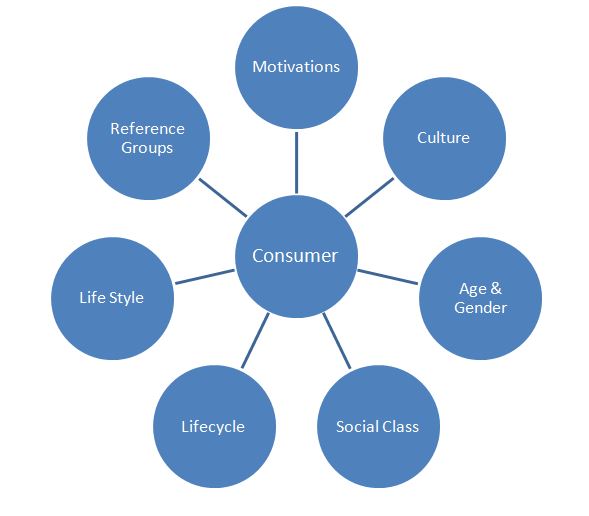
Generally, factors impacting consumer behaviour include motivations, culture, age and gender, social class, lifecycle, life style, and reference groups etc (Arnould et al., 2002, Agwaral, 2006, Hudson, 2008). Full range of factors impacting consumer behaviour can be divided into psychological, situational, and social categories and each of these categories is discussed in more detail further below. Figure 1. Factors Impacting Consumer Behaviour Psychological and Personal Factors Impacting Consumer Behaviour Psychological factors impacting consumer behaviour include lifestyle, interests, occasions for the use of products and services, benefits sought for the use of products and services etc (Batra and Kazmi, 2008). Personal factors affecting consumer behaviour is related to psychological factors and they include attitudes, motivations, perceptions, occupation ect. Lifestyle is one of the most important consumer variables and an important base for customer segmentation (Majumdar, 2010). Therefore, lifestyle analysis is perceived as one of the critical components of marketing research initiatives. Values and lifestyle systems (VALS) represent framework that divide population into different categories according to psychological factors that are found to be correlated with their purchase behaviour (Assael, 2004). An initial VALS or VALS1 specified eight separate psychographic groups: innovators, survivors, thinkers, makers, achievers, strivers, believers and experiencers. According to VALS framework belonging to each group is associated with specific psychological profile and certain lifestyle. According to Hudson (2008) VALS represents a valuable framework in practical level, because businesses can develop products and services that targets unique needs of individual groups within the framework. However, VALS has been criticised on the grounds of being too abstract and too general and this criticism has caused the development of VALS2 that “classifies people into segments based on whether they control abundant or minimal resources” (Arnould et al., 2002, p.126) Figure 2. VALS2 Figure adapted from Arnould et al. (2002) According to VALS2…
